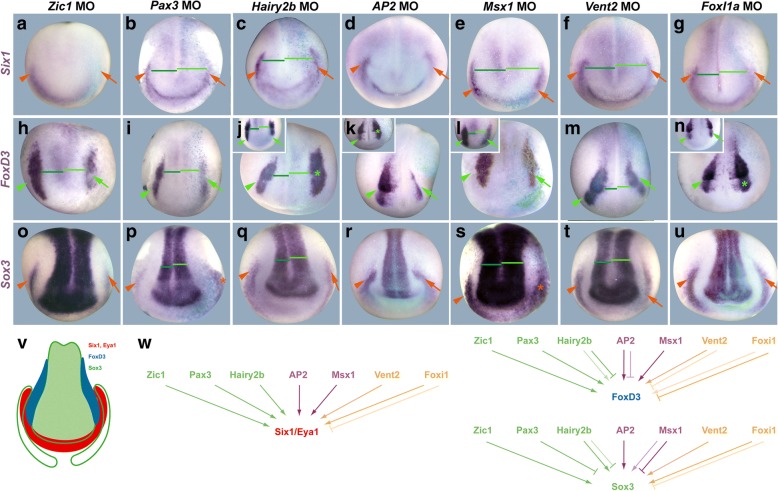Fig. 1.
Requirement of early ectodermal TFs for PPE and NC formation. a–u Expression of PPE (Six1, Sox3), NC (FoxD3) and neural plate (Sox3) markers in dorsal views of neural plate stage Xenopus embryos after injection of MOs blocking translation of early ectodermal TF genes. Anterior is to the bottom. Control side is shown on the left and injected side on the right (as indicated by blue LacZ staining). Reductions (arrows) and increased or ectopic expression domains (asterisks) in the neural (green) and non-neural ectoderm (orange) compared with the control side (arrowheads) are indicated. Green lines highlight broadening of the neural plate and lateral displacement of NPB markers on the injected side (bright green) versus control side (dark green). Insets show alternative phenotypes. v Schematized gene expression domains of Six1/Eya1 (PPE: red), FoxD3 (NC: blue) and Sox3 (neural plate and PPE: green outlines) in a neural plate stage Xenopus embryo (dorsal view, anterior to the bottom). Sox3 expression in neural plate is indicated by green filling. Modified from [27]. w Summary of regulatory interactions. Arrows indicate requirement of TFs for expression of Six1/Eya1, FoxD3 or PPE Sox3 (reduction after TF knockdown). Bars indicate requirement of TF for restriction of expression of Six1/Eya1, FoxD3 or Sox3 (increase after TF knockdown). Faint colors indicate less frequent phenotypes. See Additional file 1: Table S3 for numbers

